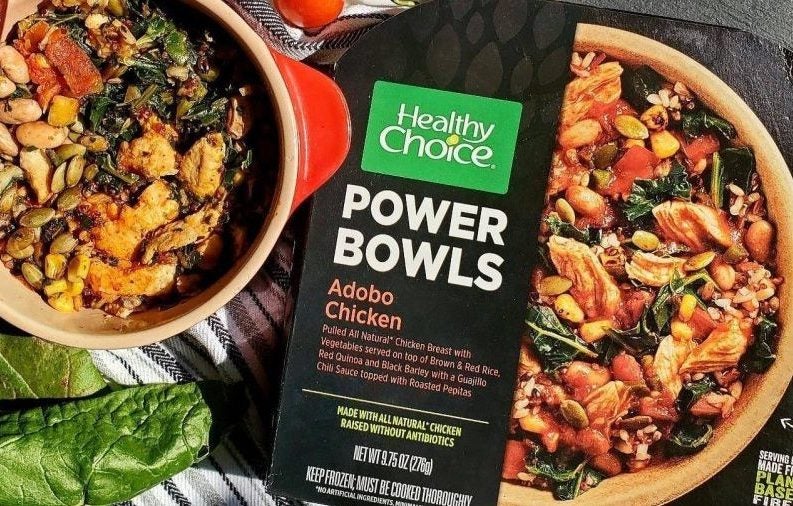
Conagra Brands has so far weathered the inflation-pricing storm but the US frozen food and snacks maker now envisages “unprecedented” pressures in the final three months of its fiscal year.
Sean Connolly, Conagra’s president and CEO, is bracing for US$100m in extra input costs in the fourth quarter, equating to a 26% increase in gross inflation from two years earlier, with frozen food and meat snacks most heavily impacted.
“The environment isn’t getting much easier in the near term,” Connolly told analysts as he presented third-quarter results to 27 February, noting the business was anticipating gross inflation in the 11% area at the time of the second-quarter results in January.
Connolly added: “The health of our business is what will enable us to deliver profitable growth for the long term. In the immediate, however, we face a volatile cost environment that continues to be very challenging.”
For the full year, the Healthy Choice brand owner’s gross inflation expectations have ticked up to 16% from 14%, particularly due to headwinds in proteins and dairy, where Conagra plans more pricing in the first three months of its new financial year.
Pricing to the consumer is anticipated at 7% when Conagra’s current fiscal year ends in May, compared with 3-4% previously. However, Connolly is largely sticking with his estimate on the impact on volumes, which are now expected to be down 3% versus a prior forecast of 3-4% lower.
Despite passing on pricing throughout the year and another bout in the pipeline, Connolly said the frozen and protein-snack segments “have been distinguished by innovation-driven sales growth, favourable elasticities, continued share gains, and limited private-label competition”.
Those elasticities have been “favourable to historical patterns [and] even more so than what we expected”, he said.
CFO Dave Marberger gave some insight into the extra costs anticipated. He put Conagra’s spending on meat proteins at about $675m in the previous fiscal year. That is expected to rise in the current 12-month reporting period by 50% in terms of market inflation, or around $340m in additional costs, “and driving nearly 40% of our total gross materials inflation in fiscal ’22”.
Marberger added: “Fuel prices were driven up significantly during the quarter due to unforeseen worldwide events. With respect to proteins and dairy, we also saw Q3 inflation at rates higher than previously forecasted.
“Meat-based proteins are difficult to hedge, and current industry freezer inventory positions are at multi-year lows. This supply dynamic limits our ability to build our freezer stock inventory, which is our typical coverage strategy.”
Pricing actions have enabled Conagra to raise its top-line sales estimate, with full-year organic growth now envisaged at 4%, from 3% previously. Third-quarter sales rose 6% to $2.9bn and were up 7.8% on a two-year basis. Year-to-date organic sales climbed 2.8% to $8.6bn.
However, the outlook for margins and EPS has been cut. The adjusted operating margin is expected at 14.5%, down a percentage point from the prior estimate, while adjusted EPS is seen at $2.35 versus $2.5. Conagra’s adjusted operating profit year-to-date was $1.2bn, down 22%, while the margin fell 24 basis points to 14.2%.
Connolly informed analysts: “Although we are experiencing pressure on our total company margins near term, we will see the benefits of the new pricing actions we’ve taken to offset this latest wave of inflation beginning in Q1 of fiscal ’23.
“Our updated outlook reflects expectations for continued strong consumer demand for our product and lower-than-historical elasticities, as well as the further increase in our gross inflation expectations for the year and the timing of the related pricing actions.”
As rising food costs become more of an issue for consumers, Connolly said Conagra is relatively insulated from private label, a category that can be in demand as a trade-down tactic when purse strings tighten.
Fielding a question on own label, he explained: “Our portfolio under-indexes in terms of private-label development versus food in general and a lot of our peers. In our two high-growth areas of frozen meals and snacks, we have very little private-label development, in some places none.”
He added: “Maybe the closest analogy for us is eating away from home. That’s a high-ticket item. And that’s where we’ve seen trading down. But, instead of that trading down going to private label, we are the beneficiaries of that trading down, and we’ll take it.”
Input-cost pressures, and the associated inflation to the consumer-facing rising prices in other areas of the household such as utilities and fuel, remain the biggest challenges for Conagra and other food businesses around the world.
And with gross inflation expected at 26%, Marberger said: “I’ve been in food for a long time, and I’ve never seen anything like that.”
See Just Food’s analysis here: Covid-19 two years on – frozen food seeks boost from cost-of-living crunch



